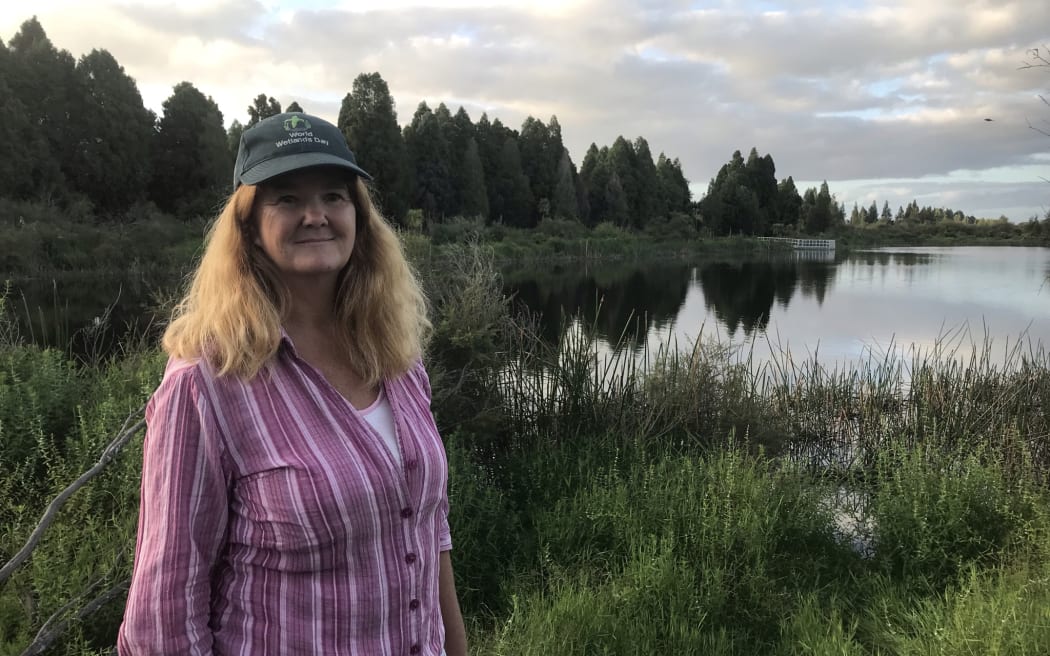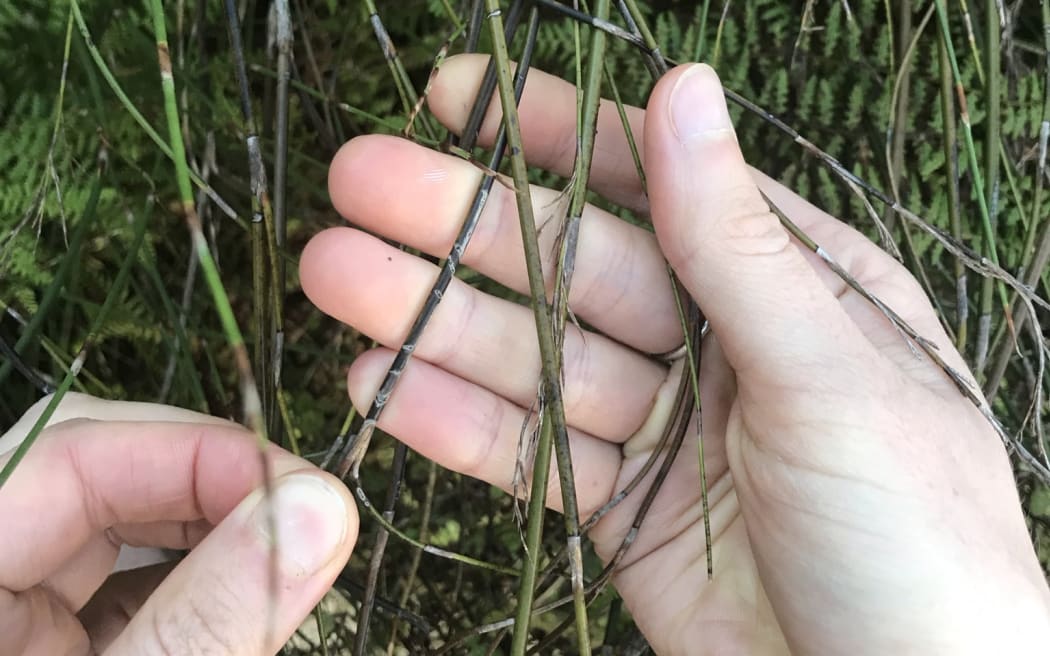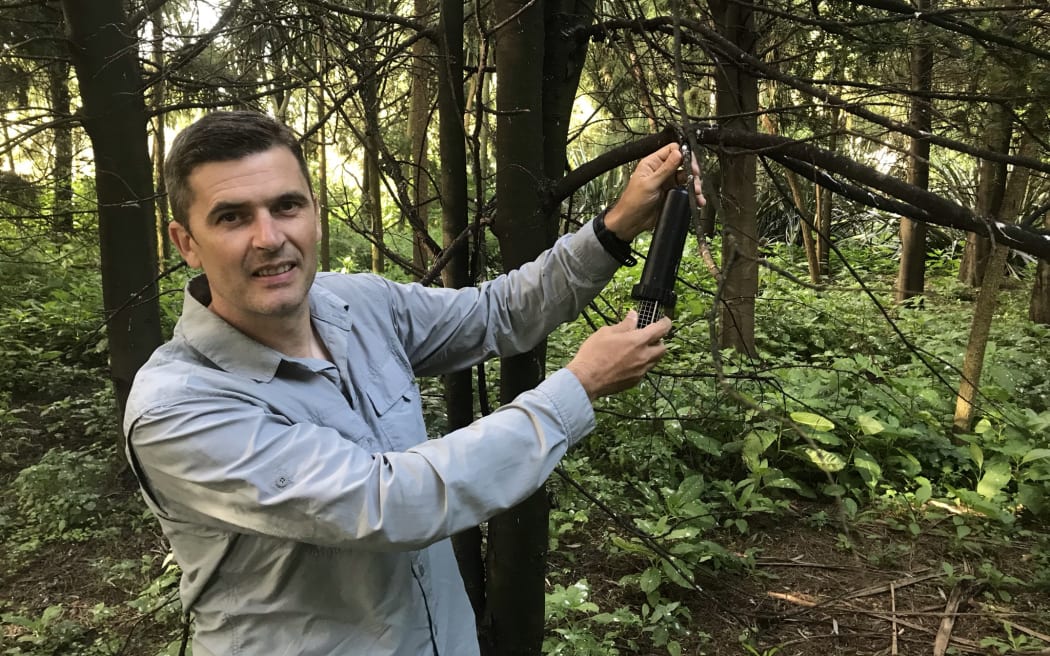Half an hour south of Kirikiriroa Hamilton, the Rotopiko wetland reserve is an oasis of trees in a desert of farmland.
At dusk, these trees fill with hundreds of thousands of starlings and sparrows, jostling for position on the branches, like noisy restless shadows.
It’s an incredible spectacle... but these birds are not welcome here.

Karen Denyer of the National Wetland Trust by Rotopiko lake. Photo: Claire Concannon / RNZ
Follow Our Changing World on Apple Podcasts, Spotify, Stitcher, iHeartRADIO, Google Podcasts, RadioPublic or wherever you listen to your podcasts
“These birds are bringing in massive amounts of nutrients,” says Karen Denyer, the executive officer of the National Wetland Trust of New Zealand.
“‘We are trying to restore this wonderful site... and we’ve got this unintentional and kind of unexpected problem.”
Rotopiko is a peat lake wetland complex. An ecosystem naturally low in nutrients, to which some rare native New Zealand species are perfectly adapted. For example, the endemic giant cane rush, and the caterpillar that lives inside it. They were translocated into the sanctuary years ago, as the group set about restoring the area.

Giant cane rush with Houdini moth caterpillar scars. Photo: Claire Concannon / RNZ
It’s been a lot of work – a massive weeding effort, erecting a predator-proof fence, removing predators, building paths and a boardwalk, creating an information trail, replanting kahikatea trees.
But now it’s at risk.
Just two years after the predator-proof fence was put up, and the predators removed, birds started to come to roost at night inside the ten-hectare fenced area in large numbers. The nutrients in their droppings threaten to change the very nature of the wetland.
Because there are so many birds it’s a major challenge to count them. Researchers from Toi Ohomai Te Pūkenga and Wintec Te Pūkenga have come on board to help. They have developed different methods to estimate changes in the number of birds, so the Wetland Trust can test the effectiveness of different deterrents.

Nicolas Sandoval from Te Pūkenga Wintec with an acoustic recorder. Photo: Claire Concannon / RNZ
Laser lights, noise, shooting, a product like pepper spray for birds, wood vinegar – nothing has worked so far. This has forced the Wetland Trust into trying a less desirable and more controversial method – returning rats to a rat-free area.
Listen to the episode to learn more about the Rotopiko peat lake complex, the flora and fauna that live there, and to hear the incredible sound of hundreds of thousands of roosting birds.
To learn more:
-
Listen to Karen speak about this issue on Afternoons with Jesse Mulligan and Morning Report.
-
Across the years Alison Ballance has made many episodes about wetlands, whether its Wetland wanderings in the Whangamarino, a trip to the Waituna Lagoon, or learning about the Kopuatai Peat Bog and Carbon Research.


